3.1 Introduction to Service Governance

With the actions in the previous chapter, we can already make calls between micro services.But we take the network address of the service provider
- Once the service provider address changes, you need to modify the code manually
- Once multiple service providers are present, load balancing cannot be achieved
- As micro-services become more and more numerous, it is difficult to maintain call relationships manually
- Service registration: In the framework of service governance, a registry is built, and each service unit registers with the registry the details of its services.And form a list of services in the registry. The service registry needs to monitor the availability of services in the list in a heartbeat way. If not, it needs to exclude the unavailable services from the list.
- Service discovery: A service invokes a service consulting service with the service registry and obtains a list of instances of all services to access a specific service instance.
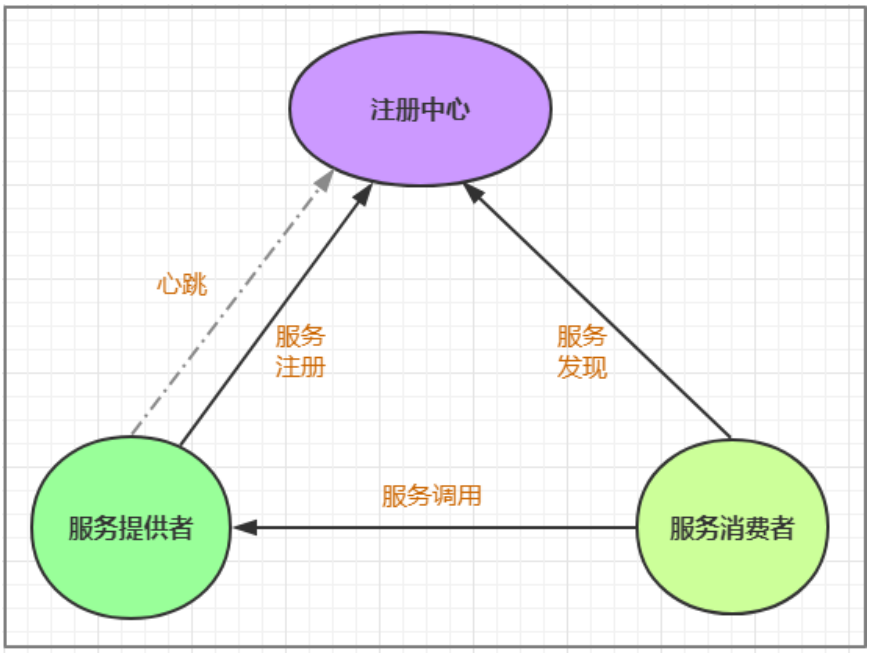
- Service registration: Save information about service providers and service callers
- Service subscription: A service caller subscribes to information from a service provider, and the registry pushes information from the provider to the subscriber
- Configuring subscriptions: Service providers and service callers subscribe to microservice-related configurations
- Configuration Download: Actively push configuration to service providers and service callers
- Detect the health of service providers and perform service culling if exceptions are found
- Zookeeper
- Eureka
- Consul
- Nacos
Introduction to 3.2 nacos
3.3 Introduction to Nacos
3.3.1 Setting up a nacos environment

Double-click startup.cmd to start nacos
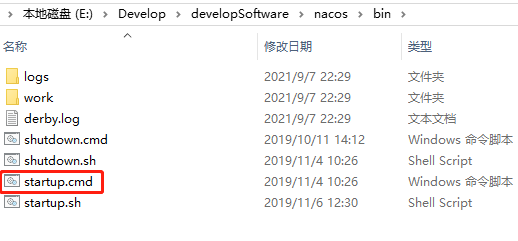
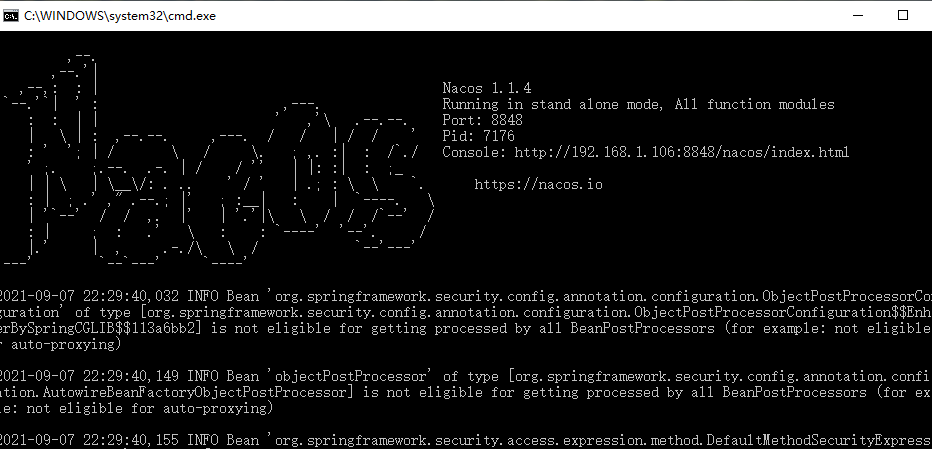
Step 3: Visit nacos
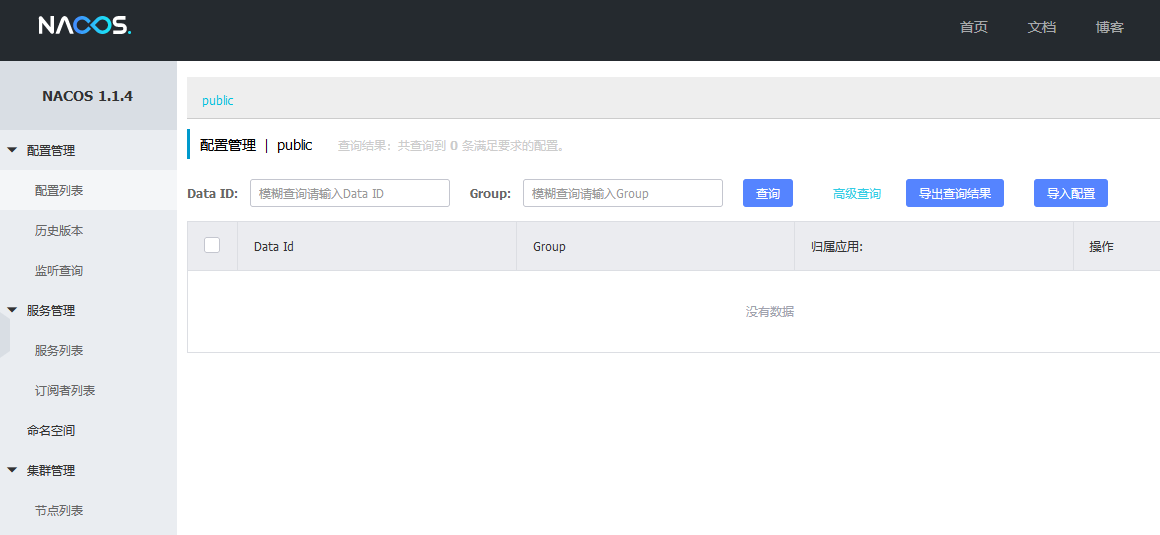
3.3.2 Register commodity microservices with nacos
spring:
cloud:
nacos:
discovery:
server-addr: 127.0.0.1:8848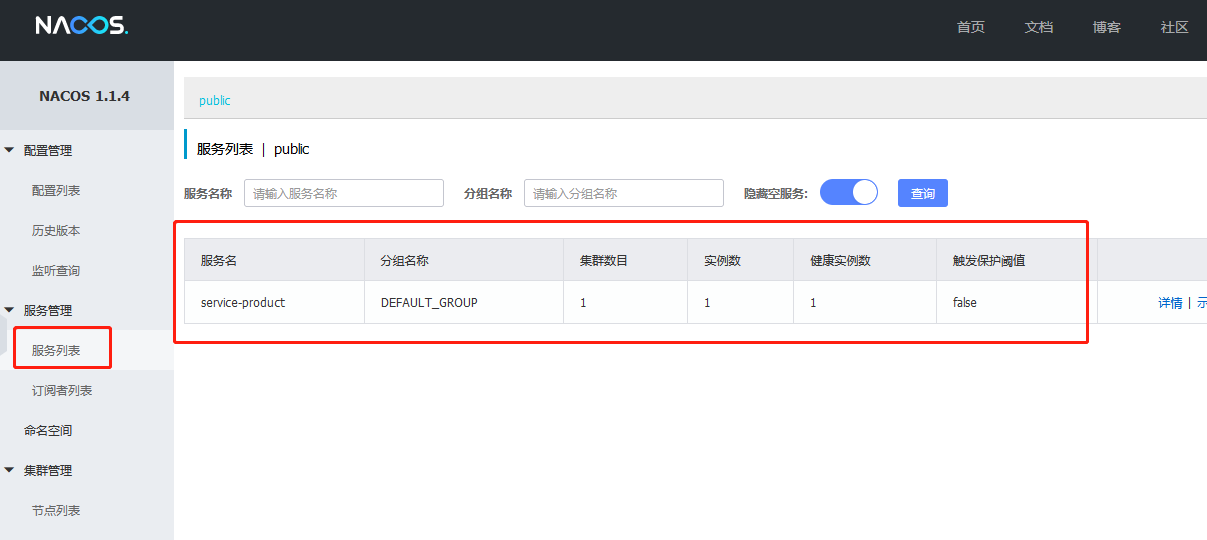
3.3.3 Register order microservices with nacos
spring:
cloud:
nacos:
discovery:
server-addr: 127.0.0.1:8848package com.itheima.controller;
import lombok.extern.slf4j.Slf4j;
import org.springframework.beans.factory.annotation.Autowired;
import org.springframework.cloud.client.ServiceInstance;
import org.springframework.cloud.client.discovery.DiscoveryClient;
import org.springframework.web.bind.annotation.GetMapping;
import org.springframework.web.bind.annotation.PathVariable;
import org.springframework.web.bind.annotation.RestController;
import org.springframework.web.client.RestTemplate;
import com.alibaba.fastjson.JSON;
import com.itheima.entity.Order;
import com.itheima.entity.Product;
import com.itheima.service.OrderService;
@RestController
@Slf4j
public class OrderController {
@Autowired
private RestTemplate restTemplate;
@Autowired
private DiscoveryClient discoveryClient;
@Autowired
private OrderService orderService;
//Ready to buy one item
@GetMapping("/order/prod/{pid}")
public Order order(@PathVariable("pid") Integer pid) {
//Get service address from nacos
ServiceInstance serviceInstance = discoveryClient.getInstances("service-product").get(0);
String url = serviceInstance.getHost() + ":" + serviceInstance.getPort();
//Calling commodity microservices through restTemplate
Product product = restTemplate.getForObject(
"http://" + url +"/product/" + pid, Product.class);
log.info(">>Commodity Information,Query Results:" + JSON.toJSONString(product));
Order order = new Order();
order.setUid(1);
order.setUsername("Test User");
order.setPid(product.getPid());
order.setPname(product.getPname());
order.setPprice(product.getPprice());
order.setNumber(1);
orderService.save(order);
return order;
}
}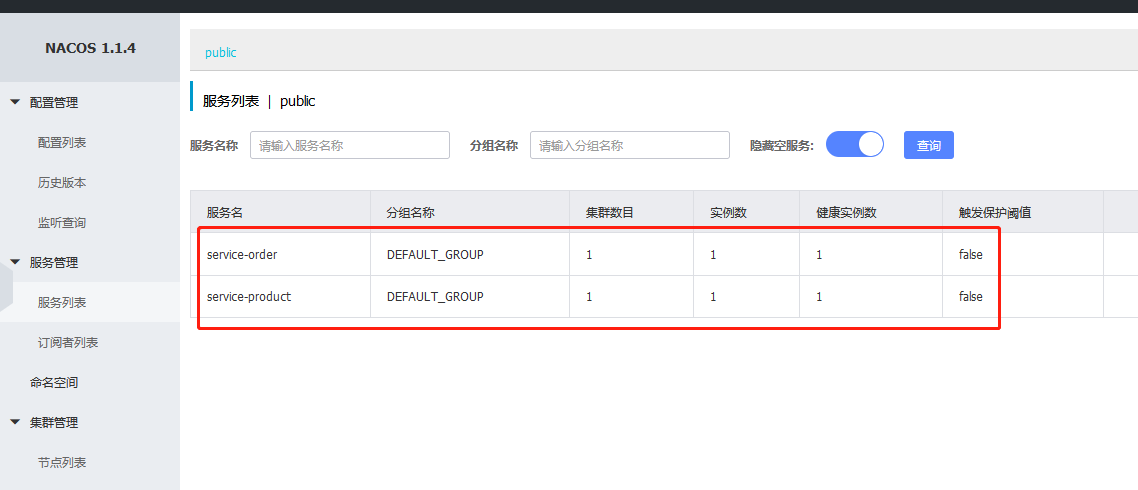
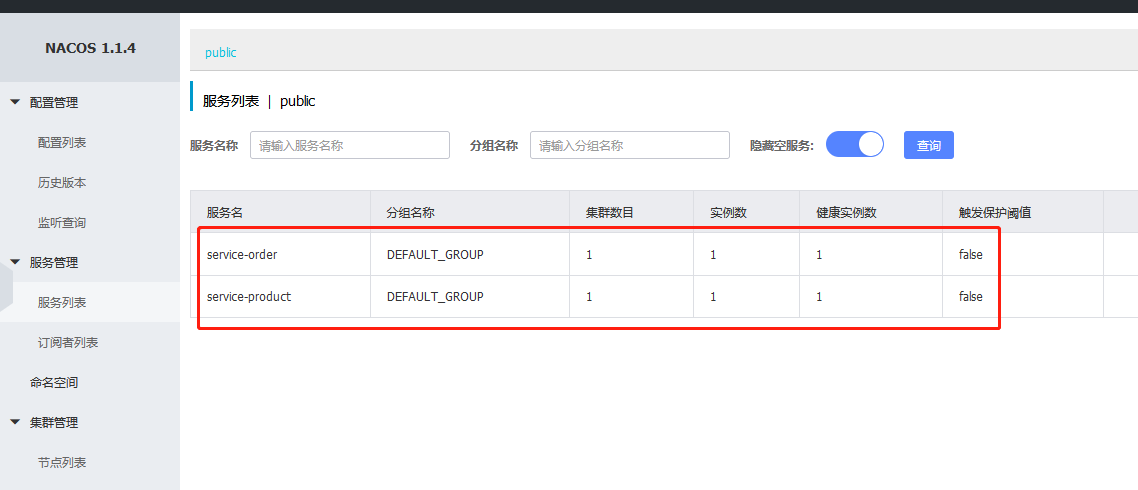
6 Then the call succeeds by accessing the consumer service validation
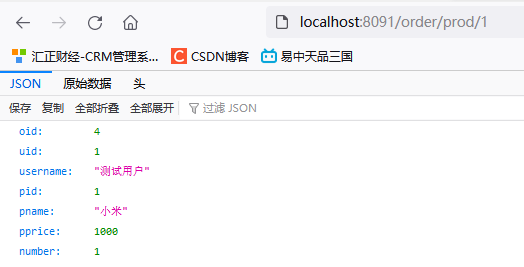
3.4 Implement load balancing for service calls
3.4.1 What is load balancing
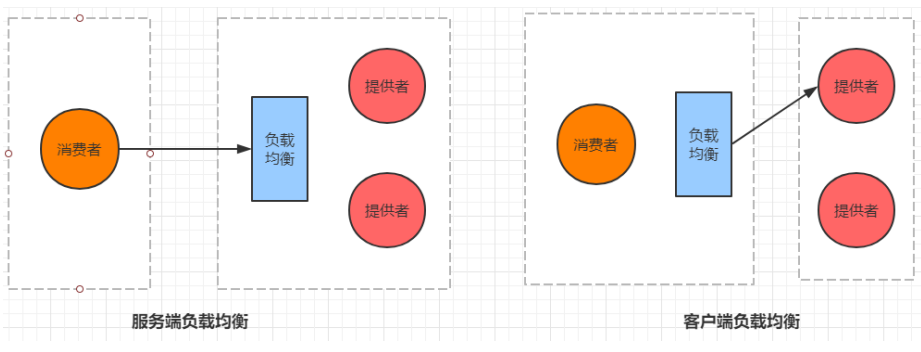
In a microservice invocation relationship, we generally choose client load balancing, that is, when one side of a service invocation decides which provider the service is to be executed by.
3.4.2 Customize Load Balancing
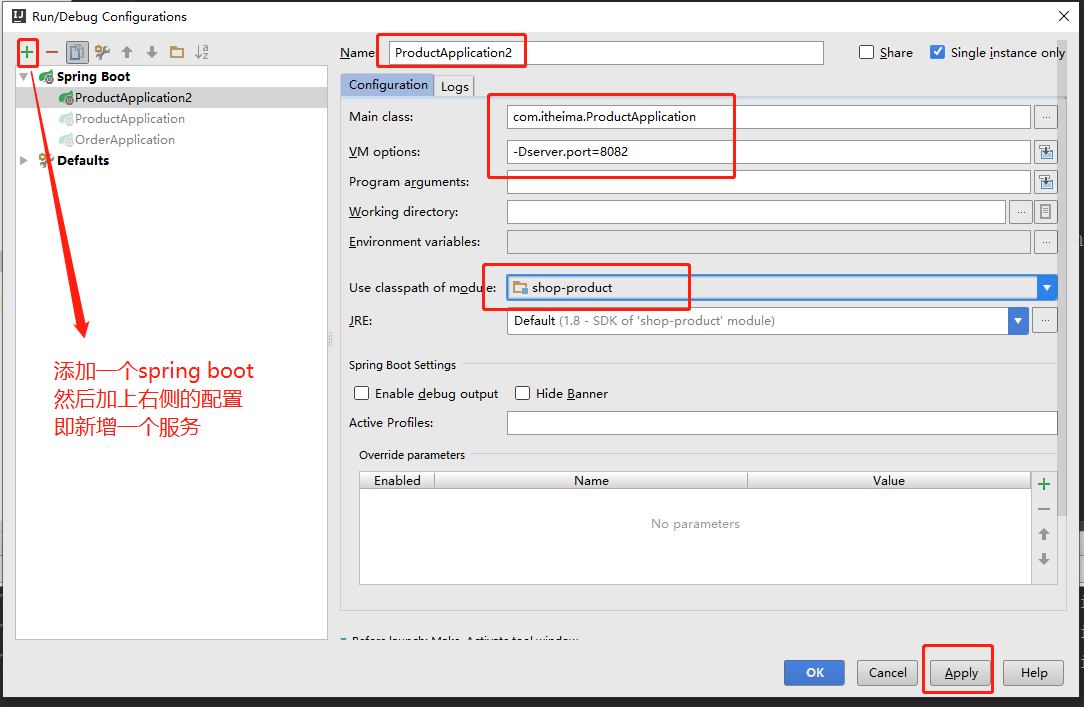
2 View microservice startup via nacos

You can also view service details
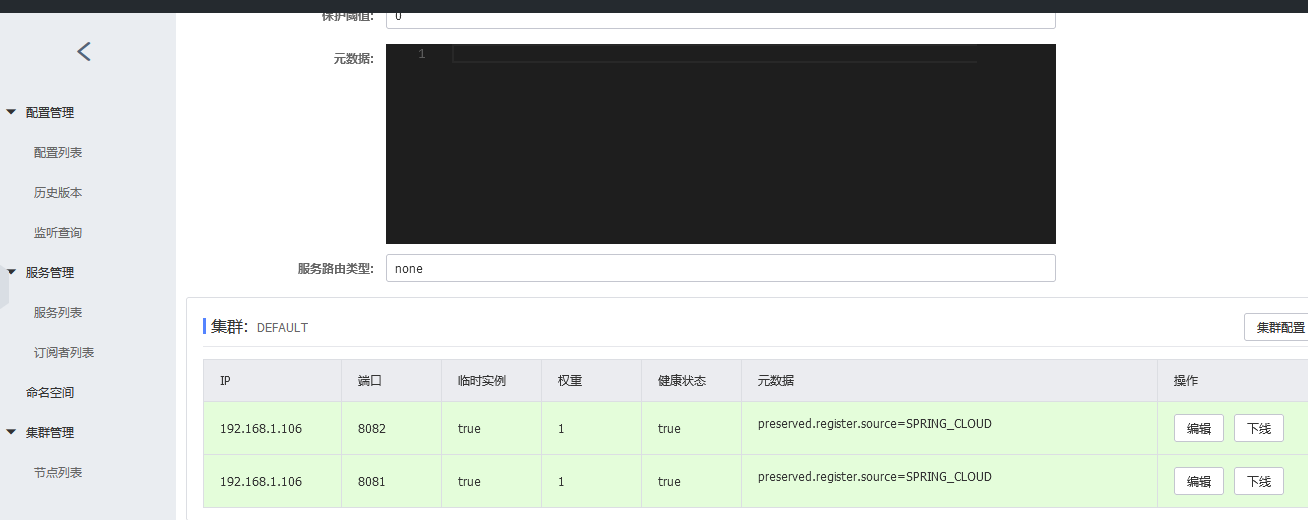
3 Modify the shop-order code to achieve load balancing (we use random numbers to achieve load balancing ourselves)
package com.itheima.controller;
import lombok.extern.slf4j.Slf4j;
import org.springframework.beans.factory.annotation.Autowired;
import org.springframework.cloud.client.ServiceInstance;
import org.springframework.cloud.client.discovery.DiscoveryClient;
import org.springframework.web.bind.annotation.GetMapping;
import org.springframework.web.bind.annotation.PathVariable;
import org.springframework.web.bind.annotation.RestController;
import org.springframework.web.client.RestTemplate;
import com.alibaba.fastjson.JSON;
import com.itheima.entity.Order;
import com.itheima.entity.Product;
import com.itheima.service.OrderService;
import java.util.List;
import java.util.Random;
@RestController
@Slf4j
public class OrderController {
@Autowired
private RestTemplate restTemplate;
@Autowired
private DiscoveryClient discoveryClient;
@Autowired
private OrderService orderService;
//Ready to buy one item
@GetMapping("/order/prod/{pid}")
public Order order(@PathVariable("pid") Integer pid) {
// Get service address from nacos
// Custom Rules Implement Random Selection Service
List<ServiceInstance> instances = discoveryClient.getInstances("service-product");
int index = new Random().nextInt(instances.size());
ServiceInstance serviceInstance = instances.get(index);
String url = serviceInstance.getHost() + ":" + serviceInstance.getPort();
log.info(">>from nacos The microservice address obtained in is:" + url);
//Calling commodity microservices through restTemplate
Product product = restTemplate.getForObject(
"http://" + url +"/product/" + pid, Product.class);
log.info(">>Commodity Information,Query Results:" + JSON.toJSONString(product));
Order order = new Order();
order.setUid(1);
order.setUsername("Test User");
order.setPid(product.getPid());
order.setPname(product.getPname());
order.setPprice(product.getPprice());
order.setNumber(1);
orderService.save(order);
return order;
}
} 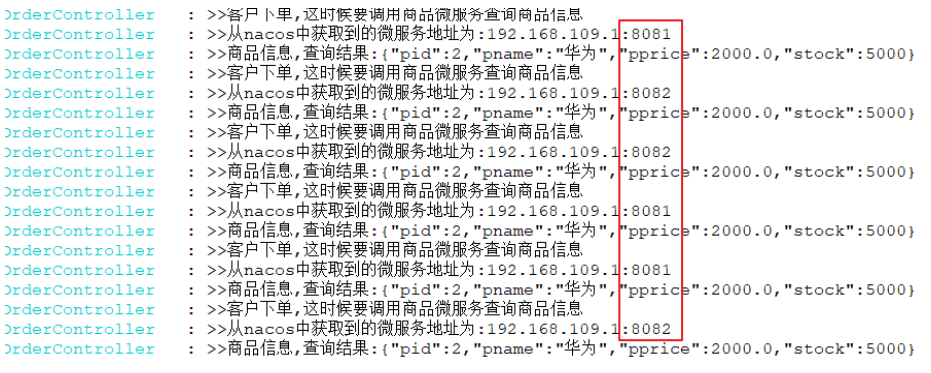
3.4.3 Load Balancing Based on Ribbon
package com.itheima.controller;
import lombok.extern.slf4j.Slf4j;
import org.springframework.beans.factory.annotation.Autowired;
import org.springframework.cloud.client.ServiceInstance;
import org.springframework.cloud.client.discovery.DiscoveryClient;
import org.springframework.web.bind.annotation.GetMapping;
import org.springframework.web.bind.annotation.PathVariable;
import org.springframework.web.bind.annotation.RestController;
import org.springframework.web.client.RestTemplate;
import com.alibaba.fastjson.JSON;
import com.itheima.entity.Order;
import com.itheima.entity.Product;
import com.itheima.service.OrderService;
import java.util.List;
import java.util.Random;
@RestController
@Slf4j
public class OrderController {
@Autowired
private RestTemplate restTemplate;
@Autowired
private OrderService orderService;
@GetMapping("/order/prod/{pid}")
public Order order(@PathVariable("pid") Integer pid) {
//Get the service address from nacos by using the microservice name directly
String url = "service-product";
//Calling commodity microservices through restTemplate
Product product = restTemplate.getForObject(
"http://" + url +"/product/" + pid, Product.class);
log.info(">>Commodity Information,Query Results:" + JSON.toJSONString(product));
Order order = new Order();
order.setUid(1);
order.setUsername("Test User");
order.setPid(product.getPid());
order.setPname(product.getPname());
order.setPprice(product.getPprice());
order.setNumber(1);
orderService.save(order);
return order;
}
}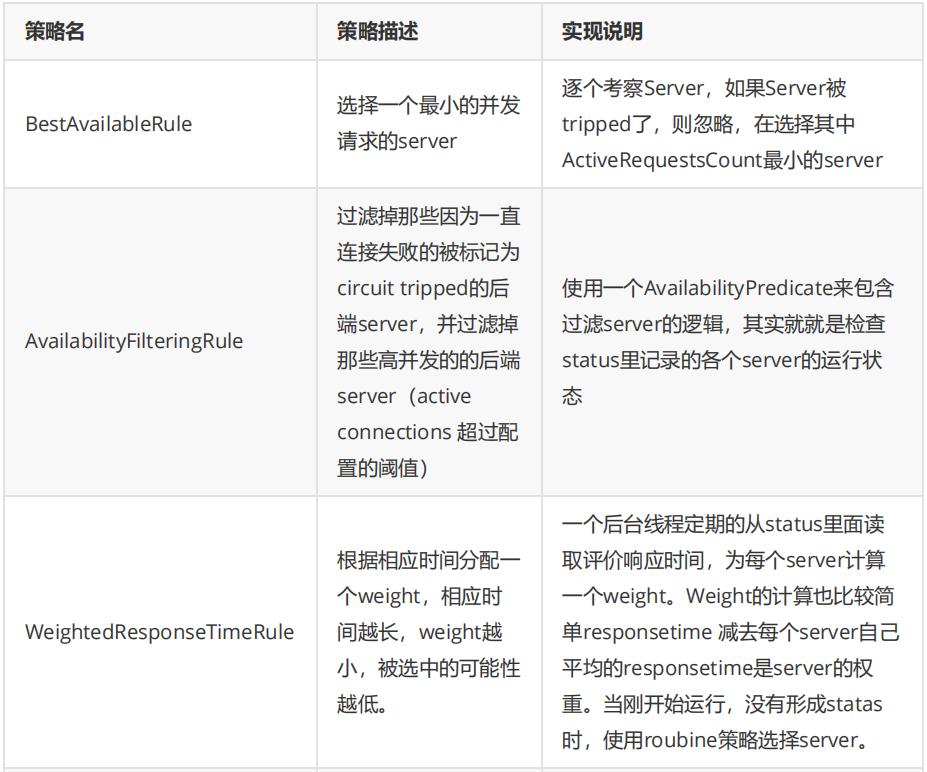
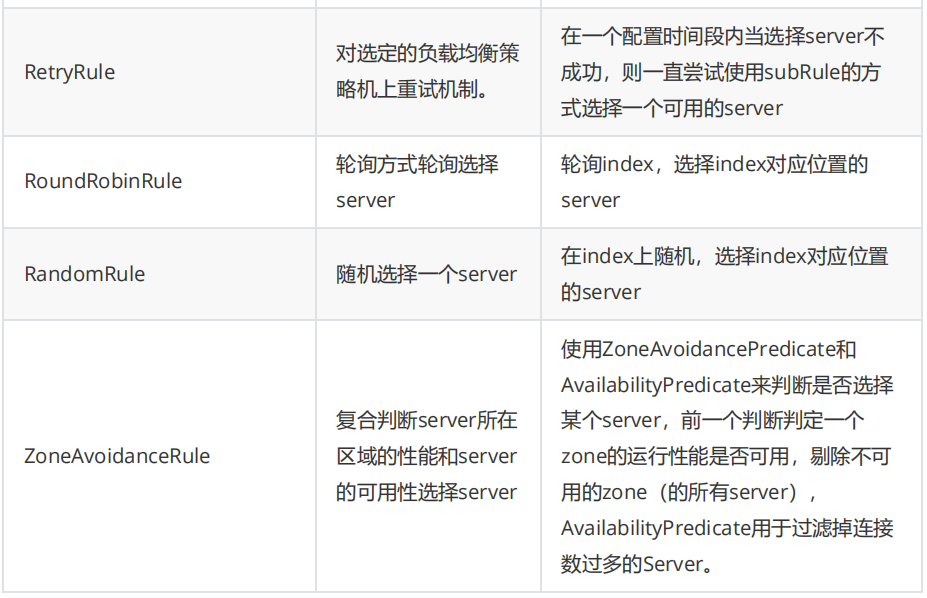 We can adjust Ribbon's load balancing strategy by modifying the configuration as follows
We can adjust Ribbon's load balancing strategy by modifying the configuration as follows
service-product: # Name of the provider invoked
ribbon:
NFLoadBalancerRuleClassName: com.netflix.loadbalancer.RandomRule3.5 Feign-based implementation of service calls
3.5.1 What is Feign
Use of 3.5.2 Feign
2 Add Fegin's comment on the main class
package com.itheima.service;
import com.itheima.entity.Product;
import org.springframework.cloud.openfeign.FeignClient;
import org.springframework.web.bind.annotation.GetMapping;
import org.springframework.web.bind.annotation.PathVariable;
@FeignClient("service-product") //Declare the provider name of the call
public interface ProductService {
// Specify which method to invoke the provider
// @FeignClient+@GetMapping is a complete request pathhttp://service- Product/product/{pid}
@GetMapping(value = "/product/{pid}")
Product findByPid(@PathVariable("pid") Integer pid);
}
package com.itheima.controller;
import com.itheima.service.ProductService;
import lombok.extern.slf4j.Slf4j;
import org.springframework.beans.factory.annotation.Autowired;
import org.springframework.cloud.client.ServiceInstance;
import org.springframework.cloud.client.discovery.DiscoveryClient;
import org.springframework.web.bind.annotation.GetMapping;
import org.springframework.web.bind.annotation.PathVariable;
import org.springframework.web.bind.annotation.RestController;
import org.springframework.web.client.RestTemplate;
import com.alibaba.fastjson.JSON;
import com.itheima.entity.Order;
import com.itheima.entity.Product;
import com.itheima.service.OrderService;
import java.util.List;
import java.util.Random;
@RestController
@Slf4j
public class OrderController {
@Autowired
private OrderService orderService;
@Autowired
private ProductService productService;
@GetMapping("/order/prod/{pid}")
public Order order(@PathVariable("pid") Integer pid) {
//Calling commodity microservices through fegin
Product product = productService.findByPid(pid);
log.info(">>Commodity Information,Query Results:" + JSON.toJSONString(product));
Order order = new Order();
order.setUid(1);
order.setUsername("Test User");
order.setPid(product.getPid());
order.setPname(product.getPname());
order.setPprice(product.getPprice());
order.setNumber(1);
orderService.save(order);
return order;
}
}5 Restart order micro-service to see the effect
